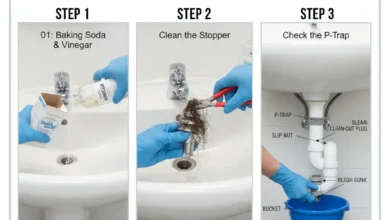Offset Toilet Flange Explained: What It Is and Why You Might Need One
If you’ve tried installing a toilet, and discovered that it didn’t sit just right – maybe it’s a little close to the wall or it is a bump into the vanity, you’re not on your own. A lot of homeowners face the same issue, particularly during the renovation of bathrooms. This is where the offset toilet fitting is able to help.
Although you’ve probably had no idea about a toilet flange do not fret. This article will provide a brief explanation of the basics of what it’s about what it is, how it operates and the reason why an offset flange could be just what you’re looking for.
What Is a Toilet Flange?
It’s time to get the basics. A toilet Flange is a part of plumbing which connects the toilet to the drainpipe that is located in your floor. Additionally, it bolts your toilet down to ensure it remains secure in position. Imagine it as the foundation or base for your toilet.
Flanges are typically made of PVC either metal or plastic and are connected to the floor and drainpipes to avoid the spread of odors and leaks. If you don’t have a suitable flange your toilet might be prone to leaks, wobble, or let sewer gasses escape. This isn’t a good thing to deal with!
What Makes an Offset Toilet Flange Different?
A normal toilet flange is straight with the pipe that is below it. It’s fine, unless the toilet requires shifting just a bit to make it fit.
This is where the offset flange can come in. It’s designed specifically to alter the toilet’s placement around 1 to 2 inches regardless of direction, whether forward either backwards or forwards, as well as toward the sides. This may not seem as much, but that tiny change can be huge difference to the appearance of the bathroom of a tiny one.
The offset flange is an angled or curly shape on the bottom. Instead of sending the waste straight down, it diverts it to the right side, where it connects to drainpipe. The flange’s top is still in a flat position on the floor which means that your toilet will be installed in just as it normally does.
Why Would You Need an Offset Flange?
There are a variety of situations when an offset flange could be an effective solution-seeker. The most popular instances:
-
Tight space The bathroom is tiny, and the standard toilet could be pushed into the wall or on the vanity. The offset flange moves the toilet to allow the bathroom some space.
-
Uncorrected Rough-In Distance“rough-in”: The “rough-in” is the distance between the wall and the middle of the drain for the toilet. A majority of toilets require 12 inches of rough-in. However, often the pipe that is in place may be off by a few inches. The offset flange can correct that and does not require the removal of the drainpipe.
-
Floor Requirements: If you have the floor joist or beam for support, or heating duct in path of straight pipe connections The offset flange could change the direction of the connection.
-
New flooring When you install the thickness of a tile or other flooring product The flange may require adjustment in size or height so that it can fit your brand new toilet properly.
Everyday Example
Imagine that you’ve purchased the latest, sleek toilet, which is a bit bigger than the one you had previously. As you prepare to install it, you discover that it’s too close the wall and that the bolts do not line up. Instead of taking away the flooring and moving the pipe, you employ an offset flange that shifts the toilet slightly. The problem is solved, and with of work, and less expense!
How to Install an Offset Flange
Installation of an offset flange may be more difficult than installing an ordinary flange, however the majority of DIYers with experience can manage this task. This is a rough outline of how to go about it:
-
Take out the toilet and Flange (if there’s one).
-
Clean the surface and inspect your drainpipe.
-
Place the offset Flange in the direction that you wish the toilet to shift.
-
Fix it on the ground and then seal it (wax rings or a rubber gasket).
-
Set the toilet over the top of the toilet, making sure it’s at an appropriate level and is safe.
Remember that the angle of offset will affect the measurement, so double-check it before installing. If you’re not certain you’re not sure, it’s a good option to talk with the plumber.
Things to Keep in Mind
-
Don’t overdo it Offset flanges work perfect for smaller changes (1-2 inches). If you’re looking to relocate your toilet further than that, you could have to think about a bigger plumbing job.
-
Be aware of height A slight offset flange could elevate the toilet a bit. Be sure that it is in a straight line on the flooring.
-
Quality is Important Make sure you choose an encapsulated, sturdy Flange. The cheap plastic ones may be brittle or warp over the course of the course of.
Final Thoughts
A offset toilet flange isn’t the first thing you consider and yet it’s an absolute lifesaver in the process of remodeling or installing. It provides a straightforward, efficient method to alter the toilet’s location without shifting plumbing lines or breaking off the flooring.
In case your toilet does not seem to be fitting and you’re worried about it, do not fret. The offset flange could be a small fix which can be a major difference. Ask at the local hardware shop, and they’ll guide you to the correct one.
Also Read: Top 10 Roofing Company Websites in California
For more exciting content, be sure to follow ACTION TIME USA
